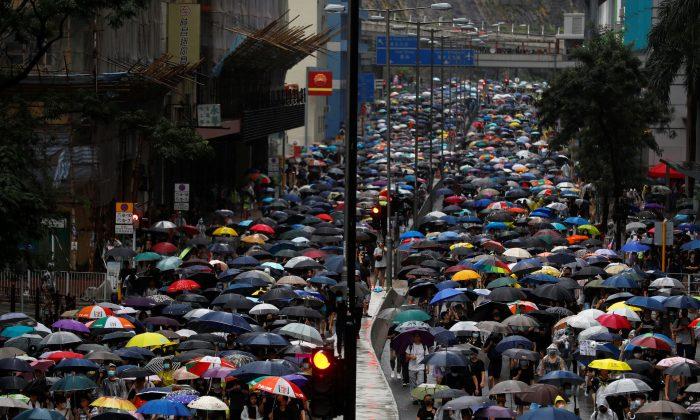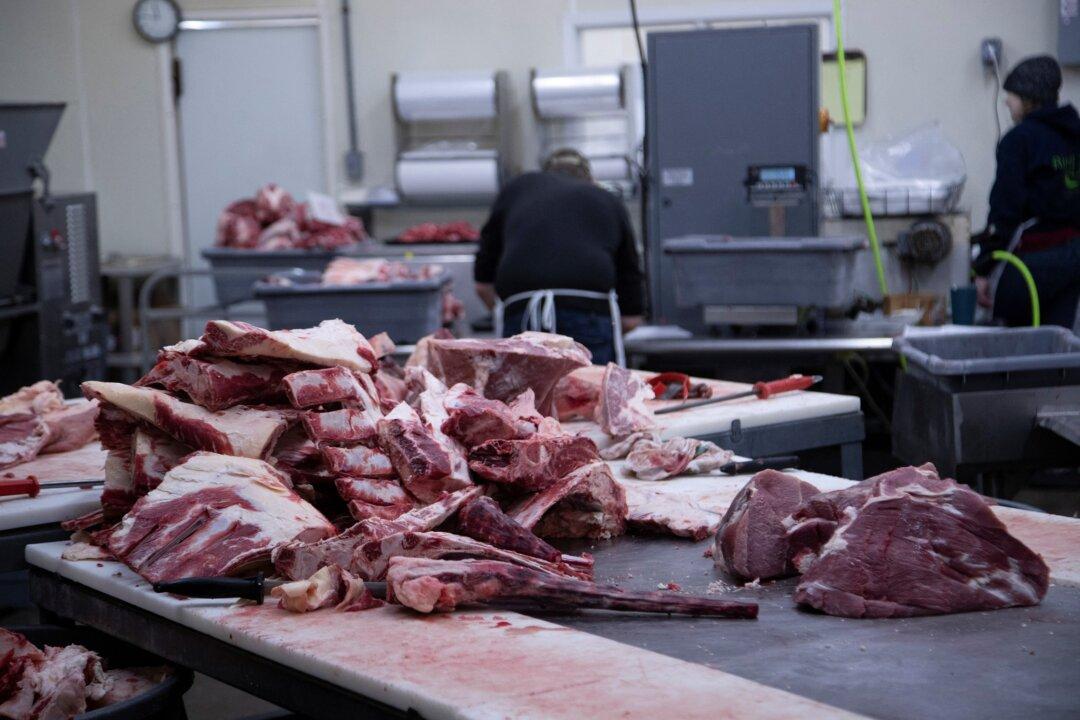HONG KONG—Hong Kong police fired tear gas to try to break up brick-throwing protesters who marched in pouring rain on Aug. 25, after violent clashes a day earlier prompted police to fire tear gas for the first time in more than a week.
The Chinese-ruled city’s MTR rail operator suspended some services to try to prevent people gathering but protesters made it to a sports stadium in the vast container port of Kwai Chung, from where they marched to nearby Tsuen Wan.
Some dug up bricks from the pavement and wheeled them away to use as ammunition, others sprayed detergent on the road to make it slippery for the lines of police. There were clashes in many directions.
Police had warned earlier they would launch a “dispersal operation” and told people to leave. Water cannon were also sent in for the first time in recent protests.
“Some radical protesters have removed railings ... and set up barricades with water-filled barriers, bamboo sticks, traffic cones, and other objects,” the police said in a statement.
“Such acts neglect the safety of citizens and road users, paralyzing traffic in the vicinity,” the statement said.
Activists threw petrol bombs and bricks on Aug. 24 in the gritty industrial district of Kwun Tong, on the east of the Kowloon peninsula.
Police then used tear gas after some protesters threw Molotov cocktails and bricks and others tore up “smart” lamp posts equipped with surveillance cameras. Other demonstrators had set up roadblocks with bamboo scaffolding.
But the vast majority marched peacefully on Aug. 25.
M. Sung, a 53-year-old software engineer in a black mask emblematic of the many older, middle-class citizens at the march, said he had been at almost every protest and would keep coming.
“We know this is the last chance to fight for ‘one country, two systems’, otherwise the Chinese Communist Party will penetrate our home city and control everything,” he said.
“If we keep a strong mind, we can sustain this movement for justice and democracy. It won’t die,” Sung said.
Protesters say they are fighting the erosion of the “one country, two systems” arrangement under which the former British colony returned to China in 1997 with the promise of continued freedoms not enjoyed on the mainland.
The protests, which started over a now-suspended extradition bill and evolved into demands for greater democracy, have rocked Hong Kong for three months and plunged the city into its biggest political crisis since the handover.
They also pose a direct challenge for Communist Party leaders in Beijing, who are eager to quell the unrest ahead of the 70th anniversary of the founding of the People’s Republic of China on Oct. 1.
Beijing has sent a clear warning that forceful intervention is possible, with paramilitary forces holding drills just over the border.
Transport to the airport appeared normal on Aug. 25, despite protesters’ plans for a day-long “stress test” of transport in the international aviation and financial hub.
Police said they strongly condemned protesters “breaching public peace” and that 19 men and 10 women had been arrested after Saturday’s violence. More than 700 have been arrested since the demonstrations began in June.





